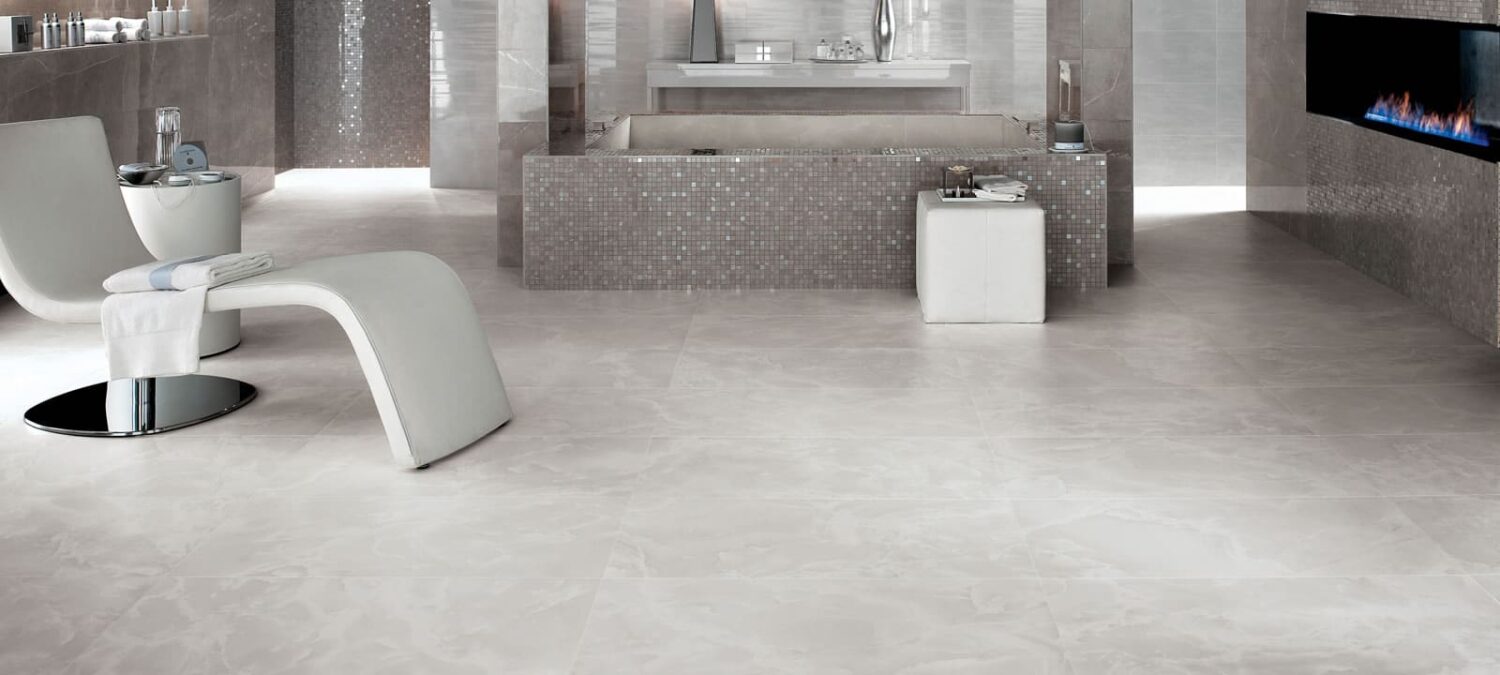To tile or not to tile, that is the question! For some this is a no brainer, others are more inclined to weigh up the options of tile alternatives when it comes to refitting a bathroom. Not only are there different waterproofing solutions out there, there’s also a decision to make on the size of tile. So if you are refitting or building a bathroom, how can you decide on the best solution for your space?
Bathroom Tiles
The traditional way to waterproof a shower enclosure, bathroom or en-suite is to use wall tiles. Made with ceramic or stone, wall tiles can bring colour, texture and elegance to the bathroom. The surfaces are easy to clean, and as they are individually laid, there’s a huge amount of aesthetic flexibility. This means that you can create a uniquely designed space. So what should you think about when looking at wall tiles?
Size
The amount of wall space can have a real bearing on whether tiles are the best solution. Not just aesthetically, but in terms of budget. Smaller tiles can look really striking, but will take a lot longer to install. Of course, you don’t have to tile a whole bathroom. Waterproofing is only required in wet spaces, around the bath and shower and basin splashback. Don’t forget that mixing different sizes of tile gives a sense of texture and interest to the walls.

Colour
Similarly to mixing tile sizes, choosing contrasting colours can look great. From a stripe to a contrasting splashback, using a mix of tiles is a great way to introduce colour. If your predominant colour is neutral, tiles can help to reflect natural light around the room and make it feel larger.
Finish
Bathroom wall tiles can be glossy or matt finish. Indeed, some tile options have a rugged and uneven texture that gives a bathroom a rustic style. By using tiles, you can mix and match different finishes to give your bathroom a depth of style and interest.
Floor Tiles
Even if you choose not to go with tiles on your walls, floor tiles are an ever popular way to finish the floor of your bathroom. Larger tiles work best here. You can decide to follow a tile theme from your walls to give an all encompassing feel, or go for a contrasting finish.

Alternatives
Of course, bathroom tiles aren’t for everyone. There are two key disadvantages of wall tiles. Firstly, they are more labour intensive to install than larger panelled alternatives. This considerably increases the overall cost. Secondly, over time grout can become discoloured and collect grime. Therefore there’s more likelihood of ongoing maintenance when you choose tiles. So what are the alternatives?
Stone slabs
Natural stone is mined in large slabs, and are often termed stone tiles. There is a natural variation to stones such as marble or granite as they are not artificially manufactured. Although the cost tends to be higher than standard tiles, these materials are extremely hard wearing and easy to maintain.
Shower wall panel
Technical advances in synthetic materials have meant that shower walls are increasing in popularity. The large panels are produced in a plethora of different styles, from replica stone to tile to geometric patterns. This alternative tends to be easier to clean as there is no grout, but the look is more standard than tile or slab finishes.
Paint
Although waterproof paint is an option, it’s not recommended for high water contact areas such as showers or basin surrounds. However, combining painted walls with tiled areas is a classic design finish. This both combines different textures and allows a more complex colour scheme that adds interest to the room.

Vinyl
As a flooring alternative to tiles, vinyl is quick and easy to lay and simple to clean. However, despite the quality improving in recent years, it is still inclined to damage easier than hard wearing tiles or slabs.
Whether you are looking for tiles or a full bathroom redesign, our experts at Stone and Chrome can advise you on the best solution for your space.
